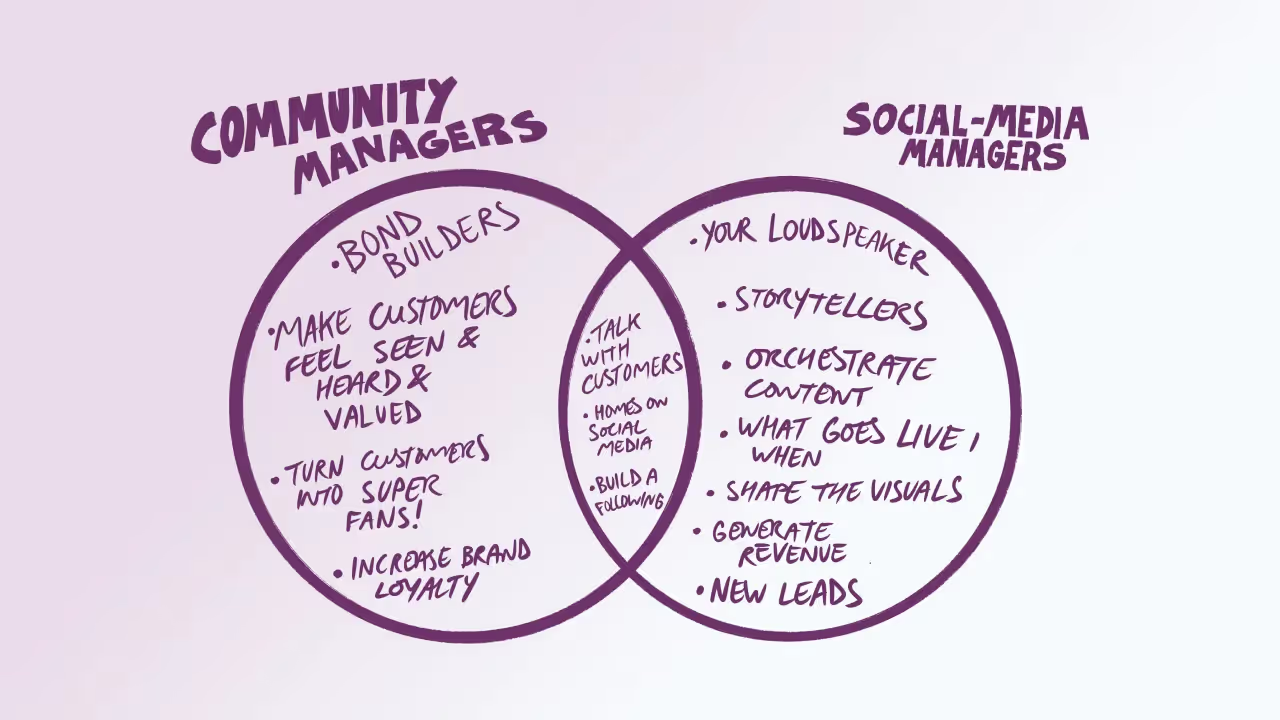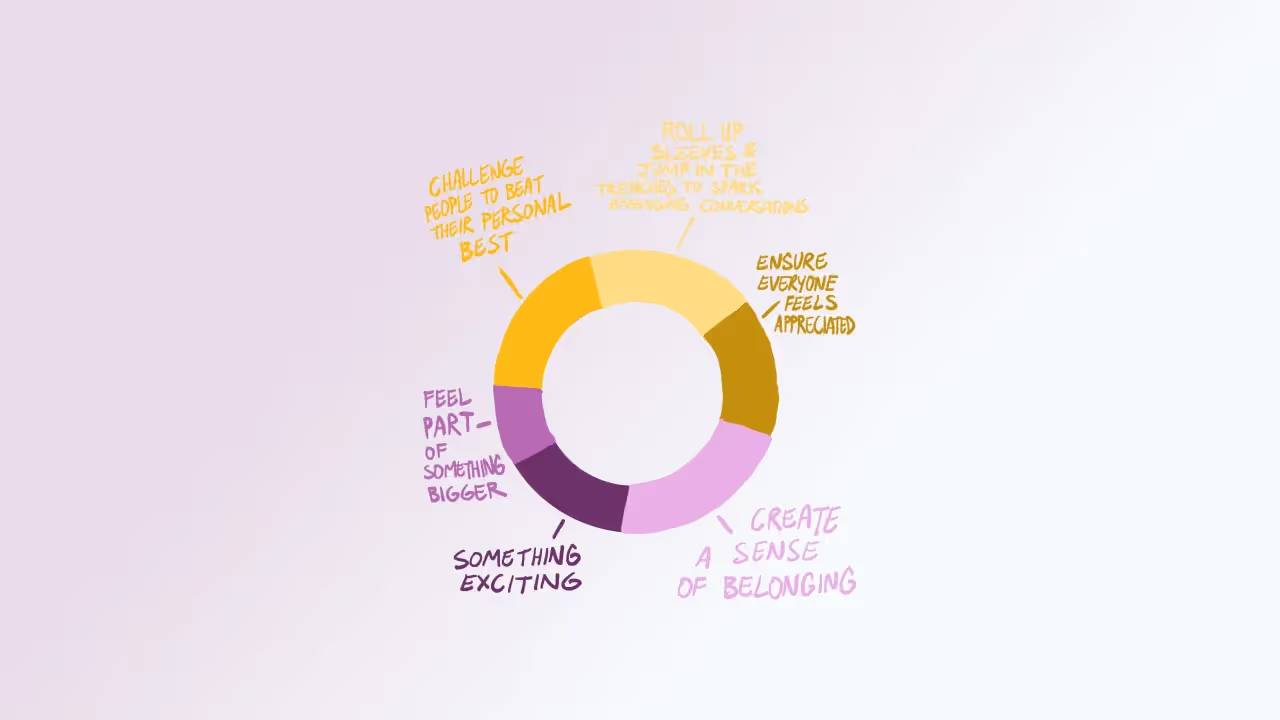Evolution of digital marketing and online community
Picture the early days of the internet. It was like being handed a shiny new toy. For startups, it was a way to step into the spotlight, onto centre stage. It was a chance to say, "Hey, look at us, look at what we've got to offer!"
But as with anything, the landscape didn't stand still. Think about the early social media sites - one minute everyone was obsessed with MySpace (if you know, you know), then Facebook came along and stole its place, and today TikTok is the dominant social platform. Change is just a part of the game.

Before long, startups realised social media wasn't just a billboard they could use to display their products and services. It was a way to have discussions with customers, to figure out what they liked, what they needed, and to shape future products or services to fit their audience needs. It wasn't just about shouting into the void; it was about having a two-way conversation and building a bond with their customers on the other side of the screen.
This shift led to the emergence of new roles, designed to harness the power of these online interactions. The roles of Community Manager and Social Media Manager came to the forefront. Initially, people often used these terms interchangeably, assuming they referred to the same role. But as startups have evolved, it’s become clear that even though the roles overlap in some areas, they are actually quite distinct.
The Community Manager’s role focuses on building and nurturing online communities around a brand or a cause, turning customers into loyal advocates. On the other hand, the Social Media Manager acts as the brand's voice across various social platforms, managing content creation and interactions to shape the brand's image.
Understanding the nuances between these roles is crucial for startups seeking to leverage the full potential of their online presence. It's the difference between merely existing online and truly connecting with your customers – which in turn can significantly influence your success in the digital space.
What is a Community Manager?
A Community Manager can be likened to a gardener who tends to a community as if it were a living, breathing garden. Their role is to create, cultivate, and manage online communities centred around the startup’s brand, ensuring it thrives. They are the caretakers who ensure the 'soil' is rich, the 'plants' are cared for, and the 'garden' is a welcoming place where every 'plant'—or community member—feels nurtured and valued.

Key responsibilities of a Community Manager
A Community Manager’s job is to get conversations rolling, to answer questions, address concerns, and to keep things harmonious. They’re the vital link between the community and the startup - sharing feedback, bringing insights back to the team, and always understanding what is happening in the mind of its customers.
Community managers also track engagement, keep an eye out for trends, and constantly think about how to make things better. It's a big job, but when the community is finally thriving, it’s worth it.
What is a Social Media Manager?
A Social Media Manager sits at the crossroads of marketing, public relations and customer service. Their PR responsibilities include maintaining consistent messaging, brand image, and reputation management. In the realm of customer service, Social Media Managers act as a direct point of contact for customers – handling inquiries, resolving issues, and providing support through social media channels. Their work involves shaping and showcasing the startup's identity across various social media platforms, and tracking engagement metrics such as followers, likes, shares, and views.
Key responsibilities of a Social Media Manager
Most Social Media Managers wear many different hats by default. From drafting posts, creating content and responding to comments, to tracking analytics and staying updated on the latest social media trends. It's a role which requires creativity, agility, and a deep understanding of what the audience wants.

The Rise of Community and Social Media Managers
Gone are the days when a startup's main focus was creating an awesome product or service, hoping it would sell. Now, due to the ever increasing competition from fellow startups and the vast choice consumers have, it's all about making genuine connections with customers.
People want to feel like they're a part of something bigger when they buy a product or use a service. They want to feel like they're a part of your startup's mission, whether that’s saving the environment, protecting animals or even having a shared love of fitness.
In today's world, social media & community management are no longer "nice-to-have" roles; they're absolutely vital for a startup's success.
Differences and similarities between these roles
Community Managers and Social Media Managers might seem similar: both talk with customers, have their homes on social media platforms and build a following. But don’t be fooled – there's more to these roles than meets the eye.
Community Managers? They're the bond builders. They're about making your customers feel like they're part of the family. It's not just about selling what you've got, it's about creating a place where people feel seen, heard, and valued. Their mission is to turn customers into super-fans who love your startup and tell everyone they know how amazing you are.
Social Media Managers? They're your startup's loudspeaker. They weave the stories your startup shares, they orchestrate the symphony of content, they decide what goes live and when, and are always responding to the chatter. Their main gig is shaping how the world sees your startup. And when they hit the mark, they can pull in some serious revenue.
Social media is used as a tool to generate new leads and increase brand awareness, whereas community is there to increase brand loyalty and retention as well as instil positive word of mouth.
So, while these roles may overlap in some ways, they are unique in their focus. But, they work in tandem, driving your startup forward.

Community Management Meets Social Media Management
Identifying the overlap between the roles
Community Managers and Social Media Managers are like puzzle pieces in a jigsaw. Although they are different, they fit together perfectly. Both roles are all about talking to people, sparking a sense of togetherness, and keeping your startup’s online vibe buzzing.
In a lot of startups, these roles aren't in separate corners. They are more like a tag team - bouncing ideas back and forth, lining up campaigns, and making sure your startup's online atmosphere is harmonious so it keeps people coming back for more. These two roles working together allow for a well-rounded approach to online chatter that's a win-win for your startup and its online family.
Key Differences: Community Manager vs. Social Media Manager
Let me share a little story. A few years ago, while working with a promising startup as an advisor, we found ourselves at a crossroads. We had an active social media presence, managed by an incredibly talented Social Media Manager. But as our audience grew, we realised we needed someone to focus solely on fostering relationships within our community. And so, we introduced a Community Manager into our team.
Community engagement vs. Content Creation
In our startup, the Social Media Manager was a content wizard. They crafted compelling posts, carefully planned the release, and measured the impact on our audience engagement. They focused on the 'what' and 'when' of sharing content.
Our Community Manager, on the other hand, was more concerned with the 'who' and 'why.' They focused on community engagement, initiating discussions, and making sure our audience felt seen, heard and valued. It was less about crafting the perfect post and more about sparking the perfect conversation.
Community health metrics vs. Social media metrics
For our Social Media Manager, success meant more likes, more shares, and more followers. They used social media metrics to gauge success and guide future strategies.
For our Community Manager, success was more a mix of qualitative and quantitative metrics. It was about the health of the community – the level of engagement, the quality of discussions, and the sense of belonging amongst members. They looked at community health metrics, like member retention and participation rate to measure their success.

In the end, while their roles were distinct, our Social Media Manager and Community Manager were two sides of the same coin. Together, they helped our startup cultivate a vibrant online presence and a thriving community. And that is the magic of these two roles when they come together.
Importance of Each Role in Different Startup Contexts
When Startups Prioritize Community Managers
Now let's put this into perspective. Suppose you're in the early stages of launching a fitness app that is all about community support and friendly competition. In this case, a fancy Instagram account with thousands of followers shouldn’t be your first priority.
What you would benefit from is a Community Manager – someone who is going to roll up their sleeves and jump into the trenches to spark engaging conversations, challenge people to beat their personal bests, and ensure everyone feels appreciated. This is a person who's going to make your users feel like they're a part of something bigger, something exciting. That sense of belonging is what’s going to keep users coming back for more and bring along their friends, which will drive growth for your startup.

When a startup may need a Social Media Manager
On the other hand, imagine you've just launched a new startup that creates stylish, sustainable handbags. Your target audience is eco-conscious fashionistas and the likelihood is that they are always scrolling through their Instagram feeds. Now, in this scenario, what's going to make a difference is a killer social media strategy, more than a community.
You need a Social Media Manager. You need someone who can spin up engaging posts, collaborate with influencers, and keep up with the latest video trends. The goal here isn't to foster a community but to build a brand that is recognisable and desirable.
When a startup might need both roles
But what about a scenario where you need both? Imagine you're running a new coworking space startup. Your target audience is freelancers and small teams who not only need a space to work, but also value networking and collaboration.
In this case, you need a Community Manager to maintain a strong sense of camaraderie and engagement within the coworking community, ensuring members feel connected and supported, as well as running events to foster connections. At the same time, a Social Media Manager would attract new members and build a brand on social media. Both roles are crucial and would complement each other in driving your startup's success.
Case Studies
Example of successful Community Management
One standout scale up which has demonstrated remarkable growth in community-building is Zapier. Recognizing the value of fostering connections among professionals in the tech industry, Zapier launched the "Zapier Community" platform on its own website.
This online forum serves as a thriving hub where users can share insights, seek advice, and collaborate on automating workflows. The platform enables users to connect with like-minded individuals, ask questions, and receive support from Zapier experts. Through initiatives like virtual events, webinars, and show and tell, Zapier has created a space that encourages knowledge-exchange and empowers users to maximise their automation capabilities.

As a result of their community-building efforts, the Zapier Community has grown to include thousands of active members, fostering a culture of learning and innovation and their company has been valued at $5 Billion. Zapier's commitment to nurturing this vibrant community has not only strengthened their brand presence but has also driven user loyalty and enhanced the overall experience of their automation platform.
Example of successful Social Media Management

Gymshark was founded in 2012 by the brilliant Ben Francis, and since then, it has carved out a distinct place for itself in the highly competitive fitness industry. One of the primary reasons for this has been its effective use of social media. As of July 2023, Gymshark has over 6.2 million followers on Instagram alone.
So, let's break this down.
The brand started with a clear target audience in mind: fitness enthusiasts, initially those engaged in weightlifting and bodybuilding. It has since evolved into a fitness lifestyle brand and it has paid off.
Gymshark built strong relationships with influencers and athletes who represented the brand’s values. They used these relationships to increase their brand visibility and credibility, forging a unique Gymshark identity.
From there, Gymshark built up a rich content strategy. They didn't just post product pictures; they posted workout tips, motivational quotes, health and wellness advice, and behind-the-scenes footage. This content variety gave their audience a reason to check their social pages even when they weren't looking to shop.
Now for some real impact numbers. According to a report by the Digital Marketing Institute, 49% of consumers depend on influencer recommendations. Gymshark capitalised on this, and in turn, grew rapidly. In just three years, by 2015, the company was making over $3 million in sales.
Gymshark's example shows us how social media, when used correctly, can indeed be rocket fuel for startups. It's about creating a brand that people love, delivering valuable content, and making customers feel understood. It’s how you turn followers into customers, and customers into advocates.
And they’re showing no signs of slowing down as they continue to invest in social media. More recently, they have begun to focus on LinkedIn and TikTok. They have also pulled off successful social media stunts, including hiring celebrity look-alikes to shop at their flagship store in London, which was viewed 4.2 million times on Tik Tok.
Example of a company successfully leveraging both roles
In terms of social media management, Duolingo is killing it. For proof, check out their platforms like Instagram, Facebook, Twitter and Tik Tok - Duolingo is not just posting content, they're sharing motivation. They've got language tips, user success stories, and even updates about their app – it's a melting pot of engaging content.
They're also super responsive, making sure they interact with comments from their users whether they’re positive or even critical. And the icing on the cake? They host challenges and competitions, making language learning more than just an educational endeavour, but a fun, social activity. It's also gamified, encouraging users to stick at it to climb the leaderboard, creating an environment of healthy competition which keeps users coming back for more.
Now, let's talk about community management. Duolingo isn't just about learning a language; it's about becoming a part of a global community of language enthusiasts.
One of my favourite features within the app is called Duolingo Language Clubs. Think of it like a virtual language learning party, where users learning the same language can compete, motivate each other, and share their highs and lows.
Duolingo has managed to drive real, measurable results with their community and social media management.
In terms of user growth, Duolingo's been explosive. Duolingo recently reported 62% daily active user growth, 42% Revenue Growth, and increased profitability in the first quarter of 2023 – which are numbers that would get any investor salivating (Duolingo).

The Future of Community Management and Social Media Management
Like I said at the beginning of this article, everything changes. And the future of these two roles is no different.
A few years ago, while chatting with a friend who runs a successful tech startup, I had a light-bulb moment. His Community Manager had stumbled on an interesting platform which allowed him to use the metaverse to create an immersive online community experience. Imagine that - an online event which makes you feel as if you're all in the same room, despite being miles apart.
The landscape of Community is always evolving and the future role of Community Managers will be more than just fostering relationships. With Apple’s new Vision Pro headset, the reality of creating standout spaces on new platforms seems closer than expected. It will be about using these new and exciting platforms to create spaces that truly stand out and offer a genuinely valuable and unique experience.
Social Media Managers are in for an interesting ride themselves. We're all aware of how quickly social media platforms can rise and fall in popularity. Just look at how quickly Clubhouse flopped or how rapidly Threads has recently gained momentum. As a Social Media Manager, you will need to be nimble and strategic, choosing to invest resources in platforms where your audience is not just present, but actively engaged.
We all know technology will continue to evolve – algorithms will shift, and trends will come and go. But the desire for human connection is not going anywhere. The most successful startups and founders will be those which humanise themselves and create spaces for their users to interact, share, and feel a sense of belonging. That's where community and social media management play their pivotal role.
Final thoughts
So let’s recap. In the simplest of terms, a Social Media Manager is your startup's voice on social platforms. They're responsible for creating, curating and sharing content which embodies your brand's identity.
On the other hand, a Community Manager is the one fostering relationships within your community. They're responsible for creating an environment where customers feel connected, heard, and valued. Their role involves nurturing this community, fueling discussions around shared interests, and making sure everyone feels like they're part of the group.
While their functions differ, the importance of both roles within a startup is paramount. A strong social media presence can raise a startup's profile and reach, while a healthy community can cement customer loyalty and fuel organic growth.
For all you founders out there, it's time to evaluate your startup's landscape. Have you clearly defined these roles within your business? Are they working together harmoniously to build your startup’s online persona? If you're coming up short, it's time to make a change before your startup gets left behind.







